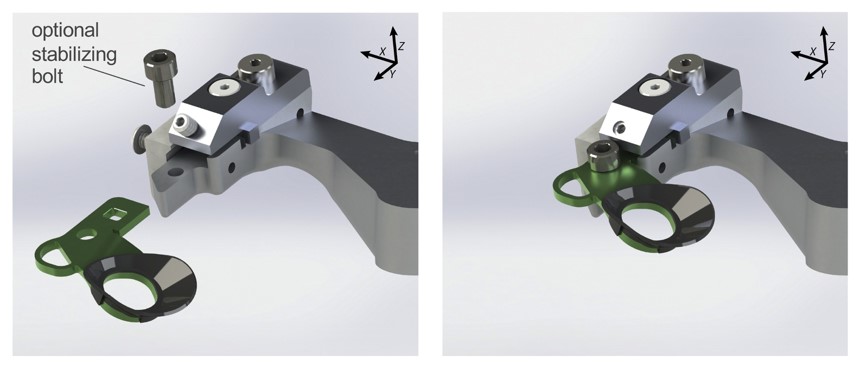Behavioral apparatus#
The physiology experiments here require that mice be head-fixed. This allows the mouse’s head to be held in a fixed position under a microscope for ophys or under electrode manipulators for ephys. For all the physiology datasets described here, this means that mice have had a head bar that was surgically implanted prior to the experiment. For more details about the head bar see Groblewski et al. [2020].

Fig. 6 A mouse with the head bar. Image from Groblewski et al. [2020].#
This head-bar can be clamped into a recording setup and go back to nearly the same location for each clamp cycle. The clamp used in these experiments does so with < 10 µm precision. This level of precision is particularly important in Ca2+ imaging experiments, because it allows the experimenter to reliably return to the same cells across multiple sessions. Further, in experiments that include ISI, it allows for targeting recordings to specified structures.

Fig. 7 System for clamping a head bar with high positional accuracy. Image from Groblewski et al. [2020].#
Head fixation allows two things.
First, this reliability allows the mouse to be reproducibly positioned on a rig. For the datasets presented here, the mouse will be placed on a running disc in front of a monitor. A set of cameras record the mouse’s face, eye position, and pupil size.
Fig. 8 Mouse on behavioral apparatus. While the setup shown here is for the Visual Coding 2-photon experiment, a similar one was used for all the datasets here.#
A screen is positioned in the center of gaze of the mouse’s right eye, which then presents stimuli at specific locations in the mouse’s field of view.
